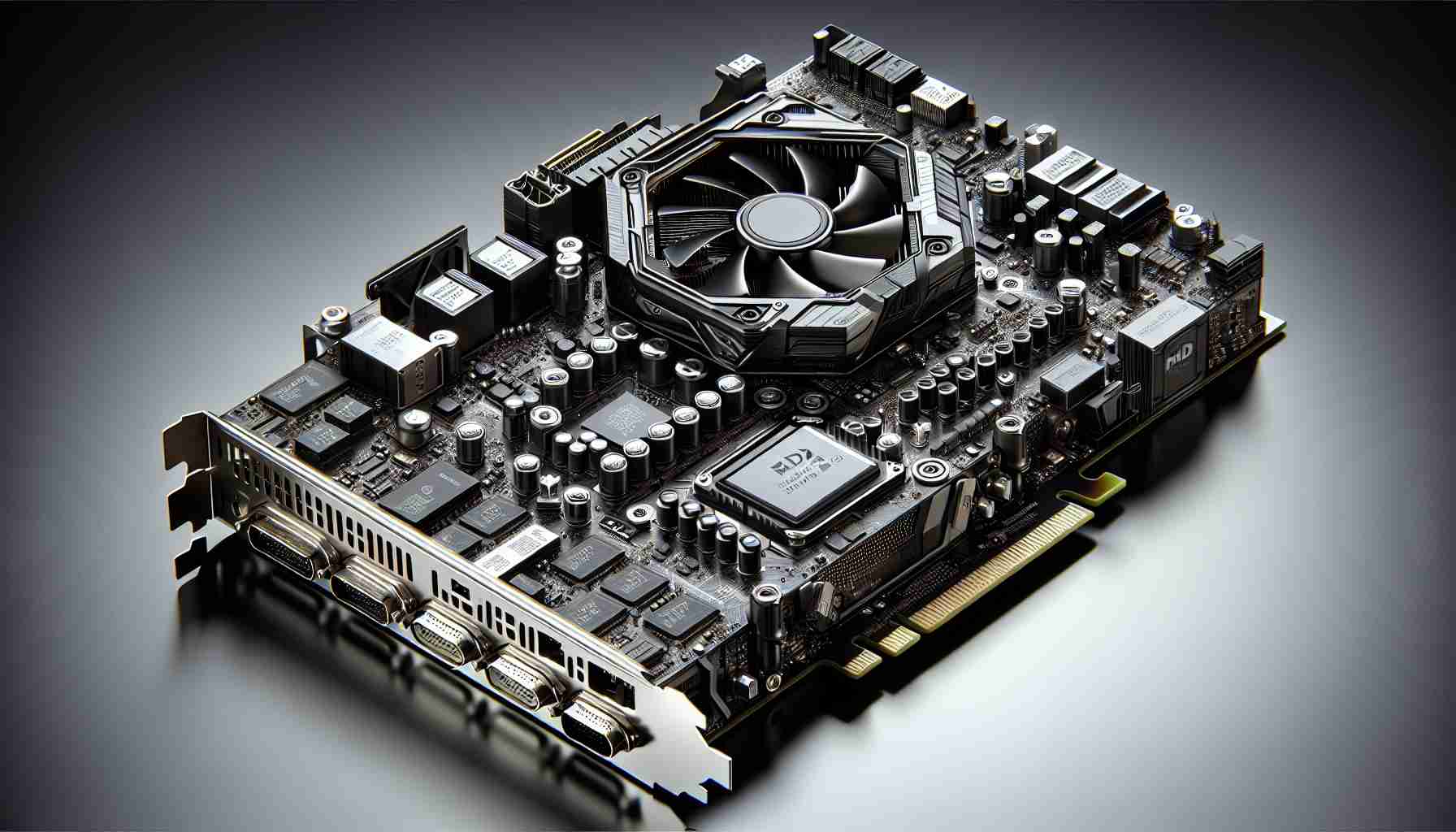AMD has once again struck gold with its latest offering, the Radeon PRO W7900 DS, poised to solidify its position in various GPU-based workstations geared towards tasks like generative AI. The card stands out with its dual-slot cooling design, which prioritizes space efficiency and offers a direct-venting cooling strategy to manage thermals more effectively—a perfect fit for compact setups that need to accommodate multiple graphics units.
The Radeon PRO W7900 DS impresses with its dual-slot cooling system that diverges from the traditional three-slot design of its predecessors. This design is principled on a blower-type cooler which, despite being noisier, is advantageous for ejecting heat out of the case directly, rather than recirculating it within.
Hardware-wise, the Radeon PRO W7900 DS matches its former models with 96 Compute Units, 192 AI accelerators, and a robust 6144 cores encapsulated in the RDNA 3 architecture. It boasts an impressive 48GB GDDR6 memory, inclusive of ECC, and a 384-bit memory bus delivering 864 GB/s throughput. With a computational capacity of 123 TFLOPS in FP16 and 61.3 TFLOPS in FP32, the card doesn’t break a sweat under heavy workloads, all while maintaining a 295 W TDP.
Setting a competitive price tag of $3499, AMD declares that the new card presents 52% more performance per dollar compared to Nvidia’s RTX 6000 Ada GPUs. In tests like the PCMark 10 for digital content creation, the Radeon PRO W7900 DS showcases more than double the performance to expense ratio.
Furthermore, AMD is releasing version ROCm 6.1.2 on June 18th, enhancing the landscape of software support. This version will feature updates such as the TensorFlow framework, preliminary support for WSL-2, and improved scalability and parallelization when using multiple GPUs. This release highlights AMD’s commitment to the extensive GPU arena, not only catering to the new Radeon PRO series but also supporting commercial Radeon RX 7900 models.
Key Questions and Answers:
– What is the importance of AMD’s new Radeon PRO W7900 DS in the AI and content creation market?
The Radeon PRO W7900 DS is designed to provide high performance for AI-driven applications and demanding content creation tasks, with a focus on efficiency and space-saving designs.
– How does the dual-slot cooling design benefit users?
The dual-slot design is more space-efficient, allowing for more graphics cards in a single workstation and direct venting of heat out of the case, which can improve thermal management in multi-GPU setups.
– What are the specifications of the AMD Radeon PRO W7900 DS?
The Radeon PRO W7900 DS features 96 Compute Units, 192 AI accelerators, 6144 cores with RDNA 3 architecture, 48GB GDDR6 memory with ECC, a 384-bit memory bus, 864 GB/s throughput, and a 295 W TDP. It delivers 123 TFLOPS in FP16 and 61.3 TFLOPS in FP32 performance.
– What is ROCm 6.1.2, and how does it relate to the Radeon PRO W7900 DS?
ROCm 6.1.2 is a software release from AMD that enhances the software ecosystem for their graphics cards, including the new Radeon PRO series and certain commercial Radeon RX models. It supports the TensorFlow framework and improves GPU scalability and parallelization.
Challenges and Controversies:
One of the challenges AMD faces is the noise level produced by blower-type coolers in the dual-slot design, which may be less appealing to users who favor a quieter work environment. Additionally, competition with Nvidia’s offerings remains fierce, with debates over performance benchmarks and the effectiveness of AMD’s value proposition in terms of performance per dollar.
Advantages and Disadvantages:
Advantages:
– Higher space efficiency with the dual-slot design.
– Effective thermal management for multi-GPU workstations.
– Potentially better value for performance compared to competitors.
– High memory capacity and throughput are beneficial for AI and content creation tasks.
– Software support with the upcoming ROCm release.
Disadvantages:
– Blower-type coolers may be noisier than other cooling solutions.
– AMD may face compatibility and driver stability issues that have historically affected some users.
– High price point may limit accessibility for smaller businesses and individual professionals.
Suggested Related Links:
– AMD Official Website
– NVIDIA Official Website
Since AI and GPU-based content creation continue to advance rapidly, staying informed about the latest hardware and software developments is vital for professionals in these fields. AMD’s Radeon PRO W790 Rollout is significant for those looking to build or upgrade their workstations for optimal performance in these cutting-edge applications.
The source of the article is from the blog shakirabrasil.info

